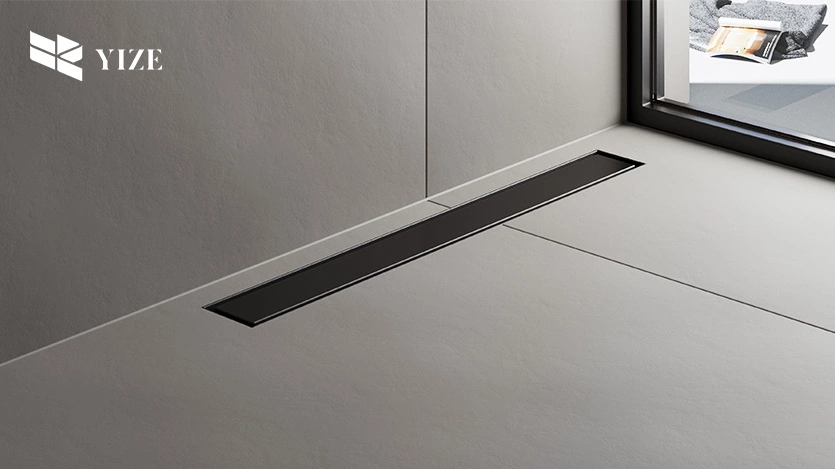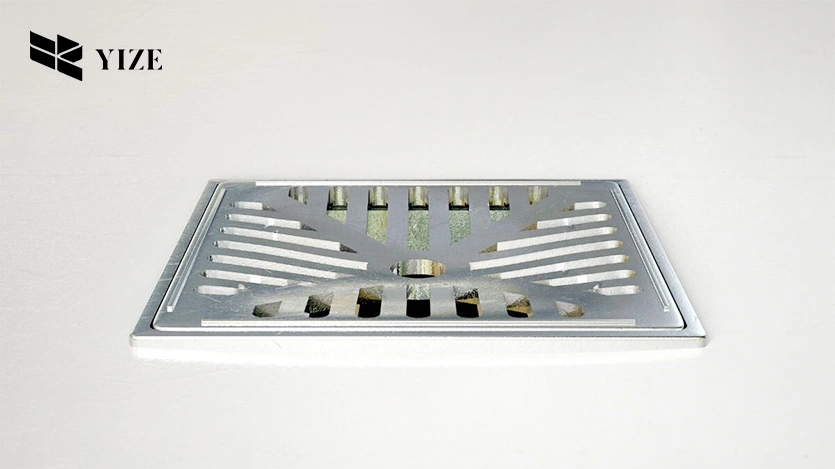I. Introduction
When planning a shower upgrade, you probably don’t always think of a shower drain, but it’s a critical decision that needs careful consideration. While there are multiple shower drain types out there, not all might work for you. The right choice impacts not just the drainage itself but also the overall aesthetics of your shower setup.
This article explores four common shower drain types and their pros and cons.
Let’s answer some basic questions to decide which drain type will best serve you!
II. Most Popular Shower Drain Types
While often overlooked, shower drains make essential components of your bathroom’s layout.
In addition to getting rid of wastewater,they’re the ultimate saviors of your bathroom from moisture damage. It explains why the global stainless steel shower drain market is set to hit USD 1.67 billion by 2032. Whether you’re building your shower or simply renovating it, here are the most common shower drain types to know:
1. Point Drains
Point drains are the most typical shower drain types, usually installed in the middle of the shower area. Also known as center drains,they’re the ones you’re most likely used to seeing. These are either square or round. The floor around point drains is sloped gently to direct water into the drain, keeping your bathroom from retaining wastewater.
Pros:
• Suitable for smaller showers
• Easy to install
• Available in a wide range of styles. So, one can opt for designs that suit their aesthetic goals.
Cons:
• Require thoughtful planning ahead of time
• May collect hair and debris more easily.
2. Linear Drains

As the name implies, linear drains are long, narrow channels placed along one side of the shower or the entrance. They require the shower floor to slope in one direction, which makes them great for modern and open-concept showers.
Today,they’re highly sought-after for their minimalistic look that still offers excellent drainage functionality.
Pros
• Work best for larger showers and curbless setups
• Have a relatively longer surface to handle more water
• Fits within larger tiles
Cons
• Require thoughtful installation for proper drainage
• Are generally pricier than other shower drain types
3. Tile-in Drains
Next up,tile-insert drains work by installing a tile over the drainage into the shower fl oor, creating a nearly invisible look. Instead of a visible drain cover,the tiles placed over the inset shelf help water seep through the gaps. This gives your shower a modern, luxurious look that doesn’t mess up the floor design.
Pros
• Need only a gentle slope for efficient drainage
• Generally hidden to complement your bathroom’s aesthetics
• Works best with linear drainage designs.
Cons
• Need more maintenance compared to other shower drain types
• Require careful tile cutting to install them properly
4. Square Drains

While square drains work pretty much like traditional point drains, some differences make them worth placing in another category. Taking a more modern approach to classic drains,these drains have a square-shaped grate that leads to a finer look. Instead of cutting down tiles in curves,they can be cut in straight lines, making them suitable for the bathroom remodeling.
Pros
• Way more stylish than traditional shower drains
• Simple to install with square-shaped tiles
• Available in a range of fi nishes and styles.
Cons
• The 90-degree corners of such shower drain types catch debris quickly
• Require frequent maintenance to keep them clean
III. YZDrain’s Recommendation: How to Choose Among Multiple Shower Drain Types?
Once you understand different shower drain types, it’s time to gauge which one works best for your shower setup. Studies reveal that only 10% of water during showers is necessary for hygiene, while the rest, 90%, ultimately meets the drainage system.
This makes your shower drains a choice you can’t go wrong with. To make it simpler, here’s how to handpick among multiple shower drain types:
1. Drain Capacity
Think about the volume of water your shower yields, and choose a drain accordingly. For instance, point drains might work for smaller volumes of water, but you’ll need a linear drain for high-pressure shower heads.
2. Ease of Installation
When choosing a shower drain, you’re likely looking for something that is easy to install. Although some drains can be easily added to your existing sewage systems, others need professional plumbing or flooring to adjust within your bathroom’s layout.
3. Shower Floor Design
Your shower drain choice largely depends on your shower floor’s design,too.
For example, if you have larger tiles, a linear drain is the best option for its one directional slope. However, a center or square drain will be ideal for mosaics or smaller tiles.
4. Bathroom Style
A linear or tile-in drain might be ideal if you’re seeking a luxurious bathroom style. But for a simpler, minimalistic bathroom, point drains will usually suffice.
However, it’s best to ensure your drain’s design and cover match your
bathroom’s overall style.
5. Budget
If you’re on a budget, point drains are an incredibly affordable way to drain your shower space efficiently. But if aesthetics is your top priority,tile-in drains offer a perfect blend of drainage and aesthetics.
IV. Conclusion
Although choosing among shower drain types might seem pretty casual,there’s no denying that this choice can make or break your bathroom’s aesthetics.
Luckily,there are options to suit everyone’s taste, budget, and preferences. But before your shower remodel,take your time to pick a drain that fi ts your needs better than the rest!
Looking for the best stainless steel shower drains in town? Get in touch with the leading manufacturer, YZDrain,to handle it for you!
FAQs
Q1: What is the most common shower drain size?
While shower drains come in all shapes and sizes to suit your requirements,the typical length is between 1.5 and 2 inches. However,for larger showers, you might need shower drain types with 3 to 4-inch drains to allow better fl ow and drainage.
Q2: Which material typically works best for shower drains?
Stainless steel works best for shower drains, mainly due to its strong
resistance to corrosion, which makes it suitable for use in wet areas. Better yet, it’s simple to clean and maintain and even has hygienic properties.
Q3: How do I prevent my shower drains from clogging?
To prevent your shower drain from clogging, it’s advisable to regularly clean the drain, flush it with hot water weekly, and install a drain cover to keep hair and other debris from blocking the drainage system.
